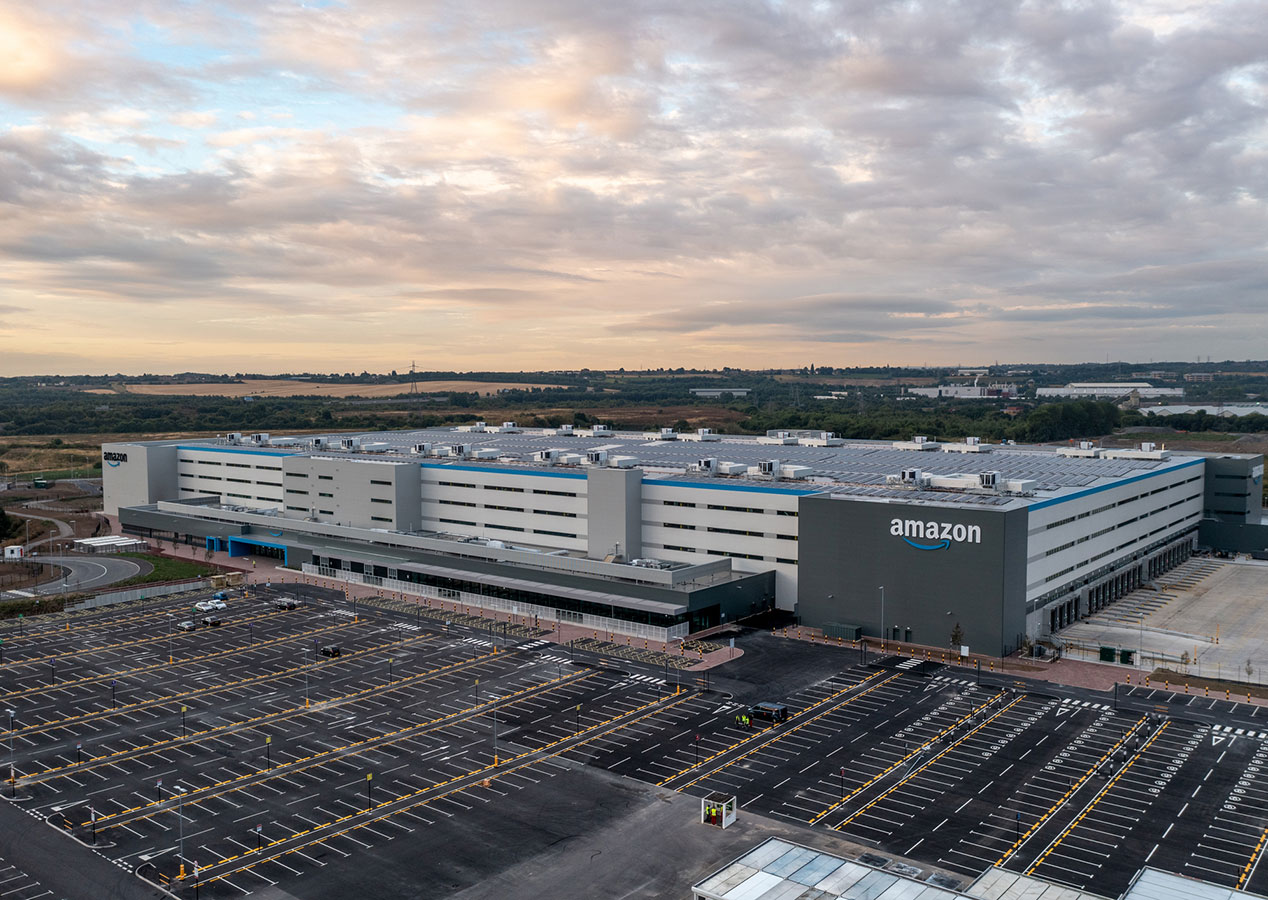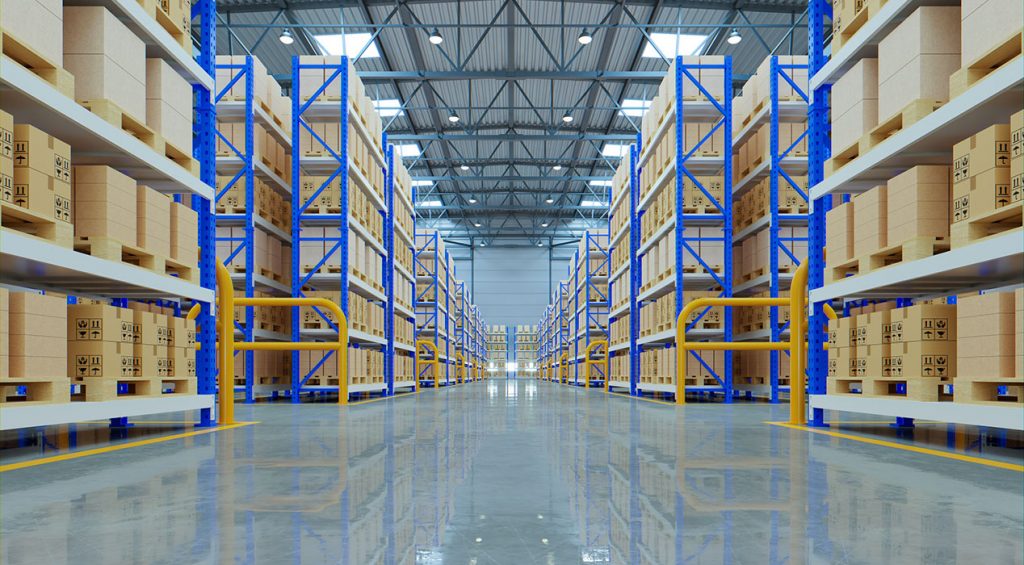Top 5 warehouse design and construction trends of the modern warehouse

The explosive growth of e-commerce in recent years has forced significant changes in the way warehouses are being designed and built. The Covid-19 pandemic made online shopping more attractive to consumers, further advancing e-commerce and the warehousing business that sustains it.
Much More Than Storage
Warehouses have been around since prehistoric times, when civilizations relied on family- or community-owned pits to store and protect their food supplies. Gradually, warehouse spaces evolved into distribution centers dedicated to shipping and receiving. Today, warehouses are much more than storage space: They are high-tech logistical hubs designed to optimize supply chains in an extremely fast business environment.
They are also bigger, taller and stronger than they were 20 years ago. Architects and builders must keep up with the ongoing transformation of the warehouse sector, where success starts with the proper utilization of space. The right space can improve the flow of shipping and receiving, boost productivity and avoid unnecessary costs.
Bigger, Taller, Greener
Here are five trends that show where the modern warehouse is heading now and in the near future.
1. The Mega Warehouse
The growth of e-commerce over the past few years has created a need for massive warehouses to store and move extensive inventories. While warehouses in urban areas tend to be smaller because of a lack of space, bigger warehouses are sprouting in suburban and rural areas.
According to Dodge Data & Analytics, the total square feet for warehouses built between 2010 and 2018 went up from 49 million square feet to 283 million square feet, a growth of almost 30 million square feet per year. The largest warehouse expansions (and new construction projects) have been on the fringe of large metropolitan areas, where land is available and where a greater number of consumers who shop online are located.
Global e-commerce giant Amazon is one of the largest contributors to the rise of the mega warehouse. The total square footage of Amazon’s fulfillment network and data center facilities (owned and leased, domestic and international) rose from 272 million square feet at the end of 2019 to 525 million square feet at the end of 2021, according to Amazon’s annual SEC filings.
The average size of new warehouses completed in the U.S. between 2012 and 2017 more than doubled, increasing by 143%—specifically, by 108,665 square feet and 3.7 feet in height—since the last development peak between 2002 and 2007, real estate and logistics firm CBRE reported. And they have gotten bigger since then.
Largest Warehouses in North America
- Tesla’s Texas Gigafactory in Austin, Texas: over 10 million square feet
- Tesla’s Fremont Factory in Fremont, California: 5.3 million square feet
- Boeing’s Everett Factory in Everett, Washington: 4.3 million square feet
- Amazon Distribution Center in Juliet, Tennessee: 3.6 million square feet
- Nike’s Distribution Center in Memphis, Tennessee: 2.8 million square feet
- John Deere Parts Distribution Center in Milan, Illinois: 2.8 million square feet
- Target’s Import Warehouse in Savannah, Georgia: 2 million square feet
- Walmart Distribution Center in Casa Grande, Arizona: 1.5 million square feet
- DSV Warehouse, in Milton, Ontario, Canada: 1.1 million square feet
- UPS Warehouse in Caledon, Ontario, Canada: 850,000 square feet
Source: Damotech (July 11, 2022)
2. Taller Warehouses
Warehouses are not only expanding horizontally; they’re getting taller. Modern warehouses are being designed and built or remodeled with 40-foot clear heights instead of the typical 20 feet. Raising the ceiling is a cost-effective way to create much-needed square footage in urban areas.
With consumers expecting greater product availability and faster shipping times, more e-commerce retailers, especially in densely populated areas, are choosing to increase their storage capacity by expanding their warehouses vertically. Keeping distribution centers physically closer to their customers allows retailers to fulfill last-minute purchases and cut shipping times, giving them a critical competitive edge. As a result, more companies are favoring multi-level warehouses in or near urban centers over spread-out, one-level facilities.

3. Remodels and Renovations
Developing large warehouses near major population centers is not always an option because of lack of suitable land and the higher costs involved. Consequently, more warehouse companies are opting for remodeling existing spaces rather than building from the ground up. Converting an old mall, for example, into a warehouse, means the project already has the land, structure, utility access and other resources in place.
4. Adding Green Elements
These days green is everywhere, and the warehouse sector is no exception. More sustainable and energy-efficient systems and practices are being incorporated in the design, construction and operation of warehouses, storage and distribution centers.
Now, and especially in the future, when the Gen Z generation takes over the economy (and the world), businesses must stay up to date with climate change issues that are important to consumers and audiences throughout the world. Their goodwill should not be underestimated.
Green Systems and Practices Trending in the Warehouse Sector
- Solar panels
- Cool-roof systems
- LED lighting
- Sustainable building materials
- More efficient layouts
- Skylights (required in California)
- Automated storage systems
- Smart lighting and climate controls
- Reducing, reusing and recycling
- Preventive maintenance
5. Better Air Quality
Proper ventilation and air filtration have always been elements of warehouse design, but in a historically tight labor market in which workers can be more selective about their employers, comfort is no longer a luxury.
Here are some factors that affect air quality and that clients, designers and builders must take into consideration when building or remodeling a warehouse:
- Occupancy rates and activities
- Indoor air quality (IAQ)
- Room refresh rates and CFM requirements
- Material storage requirements
- Layout and airflow patterns
- Filtration needs
- Exhaust and makeup air balance
- Energy consumption
While different warehouses have needs that are unique to them, it is important to consider these and other factors that can play an important role in the health and well-being of employees.
Final Word
The pandemic taught us many lessons, among them that people and companies should be ready for potential eventualities and have back-up plans in place before they need them.
With this new awareness, warehouse and distribution centers, which are crucial to the local and global flow of products, are taking steps to be as adaptable, flexible and efficient as possible, thus changing the way these facilities are built.
For more information about warehouse design and construction or if you’re ready to discuss your project, give us a call or send us a note. We have the expertise and passion for construction needed to ensure a successful warehouse project.
